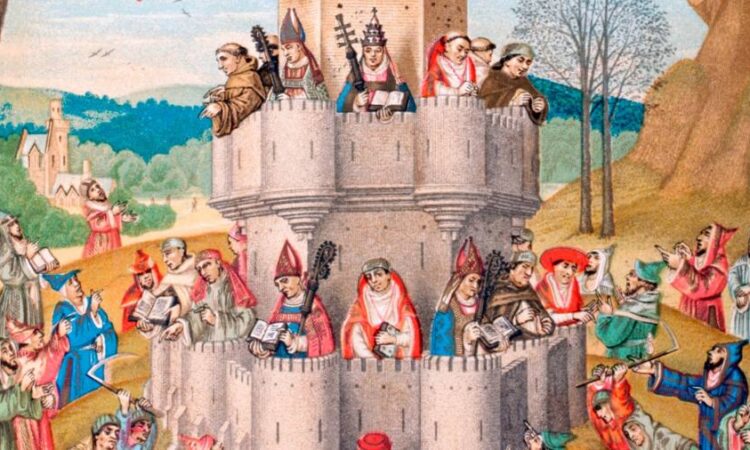
It takes an effort of the imagination to connect with medieval Europe. In the thousand years between the western Roman empire’s fall in 476 and the Ottoman conquest of Constantinople in 1453, government, society and the life of the mind took forms that seem remote from the present day. The supreme importance of religion to politics and daily life appears to separate the Middle Ages from what is conventionally portrayed as the breakthrough of science and reason from the 17th century onwards.
In Sacred Foundations, Anna Grzymała-Busse sets out the case that modern Europe owes more to the medieval past than we often appreciate. The Stanford University professor makes a bold but convincing claim: as religious and political institutions, Roman Catholicism and the papacy were dynamic, transformative forces in the period she analyses — roughly, from 1000 to 1350. Whereas many historians trace the modern state’s origins to a later era (broadly speaking, 1500 to 1800), she writes: “The European state was born in the Middle Ages . . . The medieval church was so influential because it was armed with superior organisational reach, human capital, and spiritual authority.”
Grzymała-Busse’s argument may go down well with politicians and thinkers in today’s central and eastern Europe who contend that western Europe has recklessly lost touch with its Christian heritage. As much as disputes over the rule of law or policy towards Russia, this clash over values and traditions has emerged as a persistent source of friction inside the EU.
At the same time, her book will remind all Europeans that the dividing line between church and state was as contested in the Middle Ages as it is today in countries such as France, with its intense debates about the role of Islam in an avowedly secular polity. The question of who should punish miscreant clergy greatly exercised medieval rulers, and it is alive today in the matter of sex-abuse scandals in the Catholic church.
The rise of the papacy dates to the Investiture Conflict of the late 11th and early 12th centuries. Nominally about whether popes or secular monarchs had the right to appoint bishops, it was more fundamentally a struggle between popes and the rulers of the Holy Roman Empire, a territory largely overlapping with modern Germany. With the rediscovery of Roman law, specifically the emperor Justinian’s Codex of 534, both sides invested heavily in legal expertise to fight their battles. Law schools and universities appeared, often with indispensable church support, Grzymała-Busse writes.
The papacy asserted its strength over the Holy Roman Empire by ensuring that the German- and Italian-speaking lands remained politically fragmented — a hallmark of Europe’s development that did not change until German and Italian unification in the 19th century. At the same time, the papacy generally interfered far less in England, permitting the growth of centralised royal rule and the common law that made the English state distinctive in Europe.
The church was also innovative in matters of taxation and other methods of government. Taxes collected to pay for crusades in the Holy Land set a precedent for secular taxation. From Castile and Sicily to Hungary and Poland, financial departments, judiciaries and chanceries, which handled correspondence, petitions and contracts, were staffed with clergymen who possessed the necessary skills.
Grzymała-Busse’s work draws partly on ideas set out in classic histories such as Walter Ullmann’s The Growth of Papal Government in the Middle Ages (1955) and Richard Southern’s Western Society and the Church in the Middle Ages (1970). But it is a very fine book in its own right and one with much relevance to our own times.
Sacred Foundations: The Religious and Medieval Roots of the European State by Anna M Grzymała-Busse Princeton University Press £25/$29.95, 256 pages
Tony Barber is the FT’s European comment editor
Join our online book group on Facebook at FT Books Café







